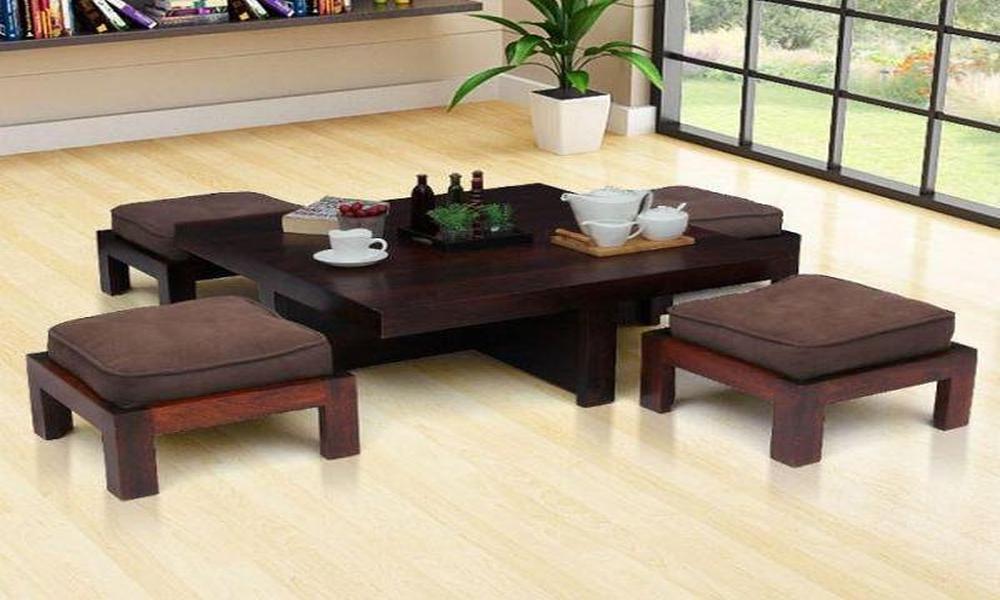When you have a living room of your own, it’s natural that you would want to DIY everything. A coffee table is no exception. Designing and building your own coffee table can be a rewarding and creative DIY project. It allows you to unleash your imagination and create a unique centerpiece that perfectly complements your living space.
To help you embark on this creative journey, we’ve compiled 10 valuable tips that will guide you through the process of crafting a DIY coffee table. From planning and research to finishing touches, let’s explore each tip and showcase examples to inspire your own project.
Plan and Research
Before diving into your DIY coffee table project, take the time to plan and research different designs, materials, and techniques. Explore online platforms, visit furniture stores, and browse through DIY blogs for inspiration.
For instance, you may come across a rustic farmhouse coffee table with a reclaimed wood top and metal hairpin legs, or a sleek and modern design with a glass top and chrome frame.
Consider Functionality
Consider how you will use your coffee table. Will it primarily serve as a decorative piece or provide storage? For example, if you require storage, you might opt for a design that incorporates drawers or shelves. Alternatively, a minimalistic design with a sleek tabletop and thin legs may be suitable for a smaller space.
Choose the Right Materials
Select materials that align with your desired style and budget. Common materials for DIY coffee tables include wood, metal, glass, and concrete. For a rustic vibe, you could choose reclaimed barn wood, while a contemporary design may call for a combination of metal and glass.
Measure and Cut with Precision
Accurate measurements are crucial for a well-built coffee table. Use a measuring tape and a square to ensure precise measurements. For example, if you plan to build a rectangular coffee table, measure and mark the dimensions for the tabletop, legs, and any additional components.
Practice Safety
Safety should always be a priority during DIY projects. Wear appropriate safety gear, such as goggles and gloves, and operate tools according to safety guidelines. For instance, when using power tools like a circular saw or a drill, ensure you have a firm grip and maintain control throughout the cutting and drilling process.
Sand and Finish
After cutting the components of your coffee table, sand the surfaces to create a smooth and polished finish. If you’re working with a wooden tabletop, use sandpaper to smooth out any rough edges or imperfections. Apply a stain or finish to protect the wood and enhance its natural beauty.
Experiment with Design
Let your creativity shine by experimenting with unique design elements. Consider adding custom touches that reflect your personal style. For example, you could use carved wooden legs for an intricate and artistic look or incorporate a mosaic tile pattern on the tabletop to add a pop of color and texture.
Test Stability
Ensure your coffee table is stable and can support the weight without wobbling. Consider the type of legs or base you use and the overall structure. If you’re using metal hairpin legs, ensure they are securely attached to the tabletop and can provide proper stability. This is the step you can’t miss before putting stuff on your table.
Personalize with Finishing Touches
Add those final touches that make your coffee table truly one-of-a-kind. Consider adding decorative elements like unique drawer pulls, paint accents, or custom engravings. These personalizations can elevate the visual appeal of your coffee table. For example, you could attach vintage-inspired brass drawer pulls to add a touch of elegance and character.
Seek Inspiration and Resources
Throughout your DIY coffee table project, seek inspiration from various sources. Explore online platforms, DIY blogs, and furniture stores like Homary Furniture for additional ideas, tutorials, and resources. It offers a wide range of coffee tables in different styles and materials. By browsing their collection, you can gather inspiration and find pre-made components that can simplify your DIY coffee table project.
Conclusion
Embarking on a DIY coffee table project allows you to unleash your creativity and create a unique centerpiece for your living space. By following these 10 tips, you’ll be well-equipped to plan, design, and build a coffee table that perfectly suits your style and needs.
Remember to research, choose the right materials, measure accurately, prioritize safety, and add personal touches to make your coffee table truly special. Seeking inspiration from resources like Homary Furniture can further fuel your creativity and provide additional guidance for your DIY journey.
Enjoy the process and revel in the satisfaction of crafting a coffee table that reflects your personal style and enhances your living space.

